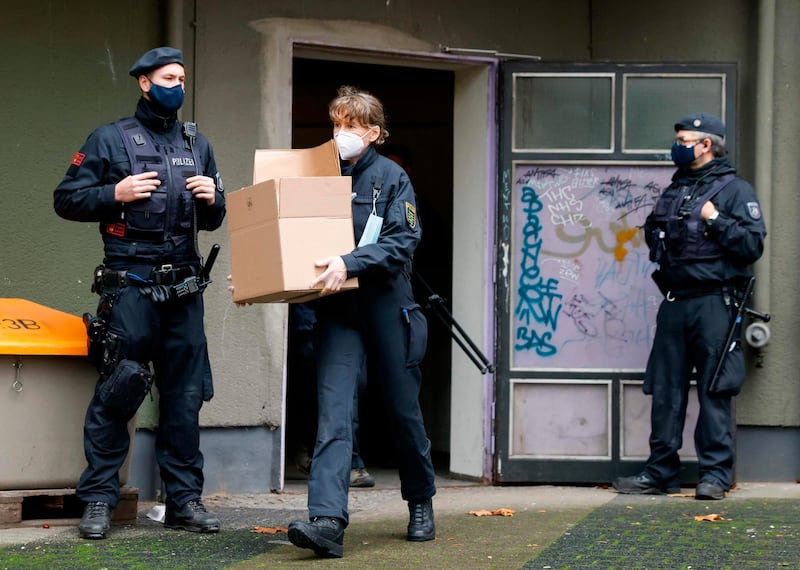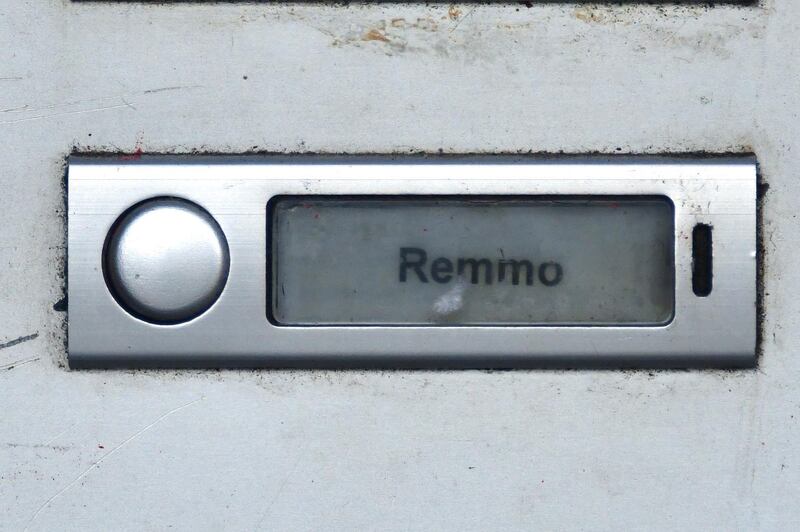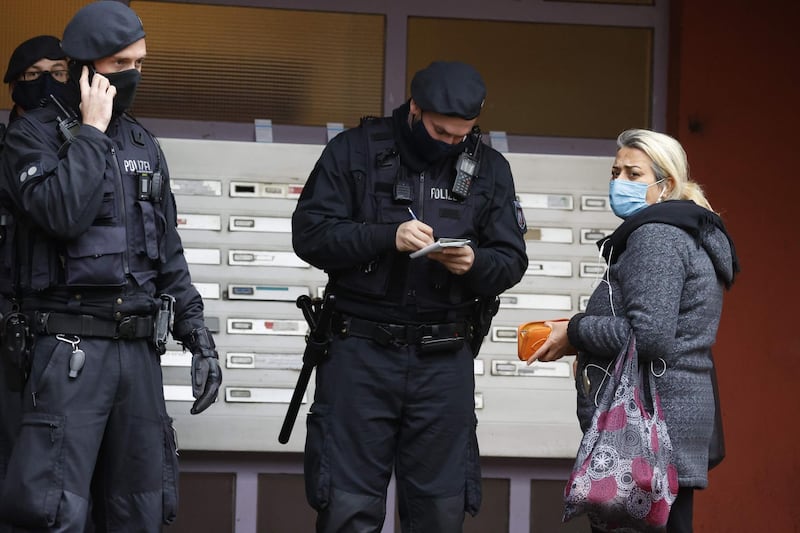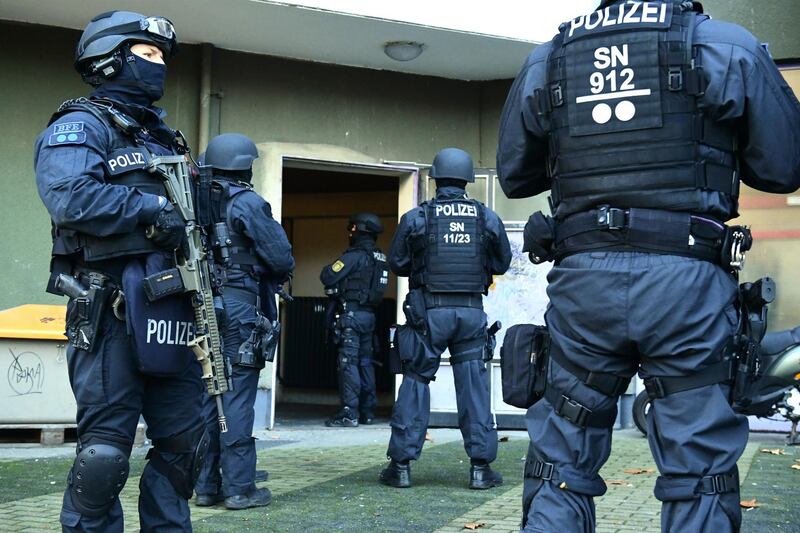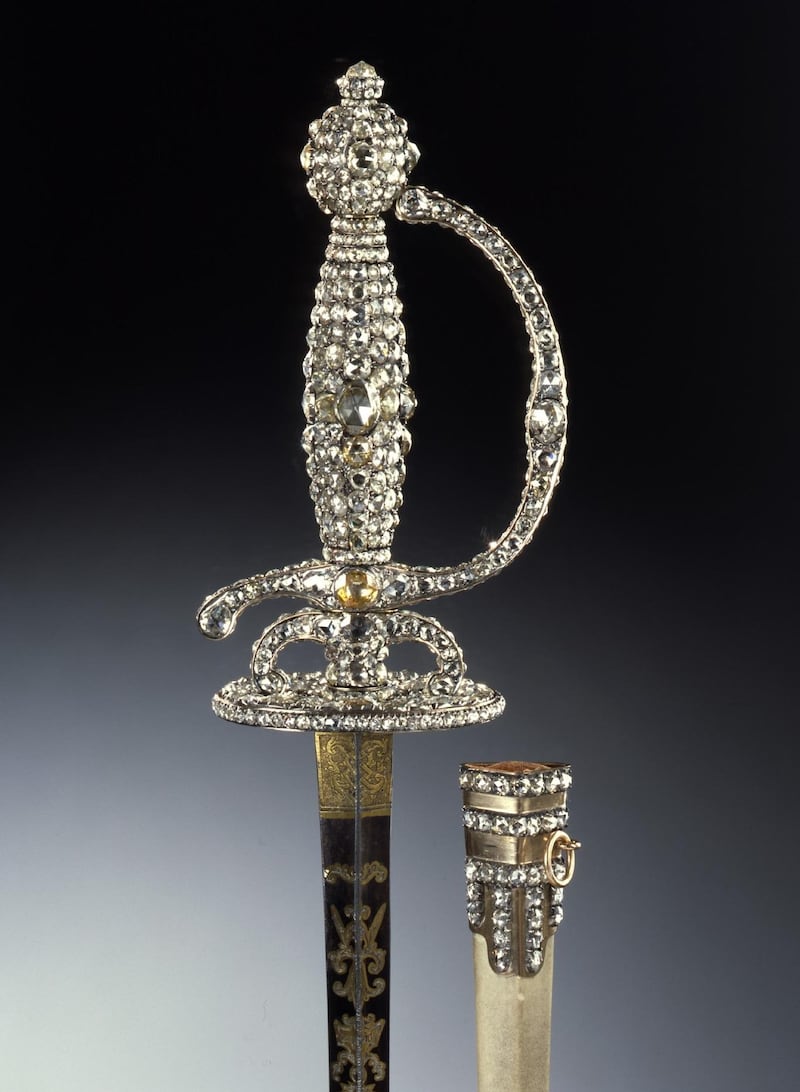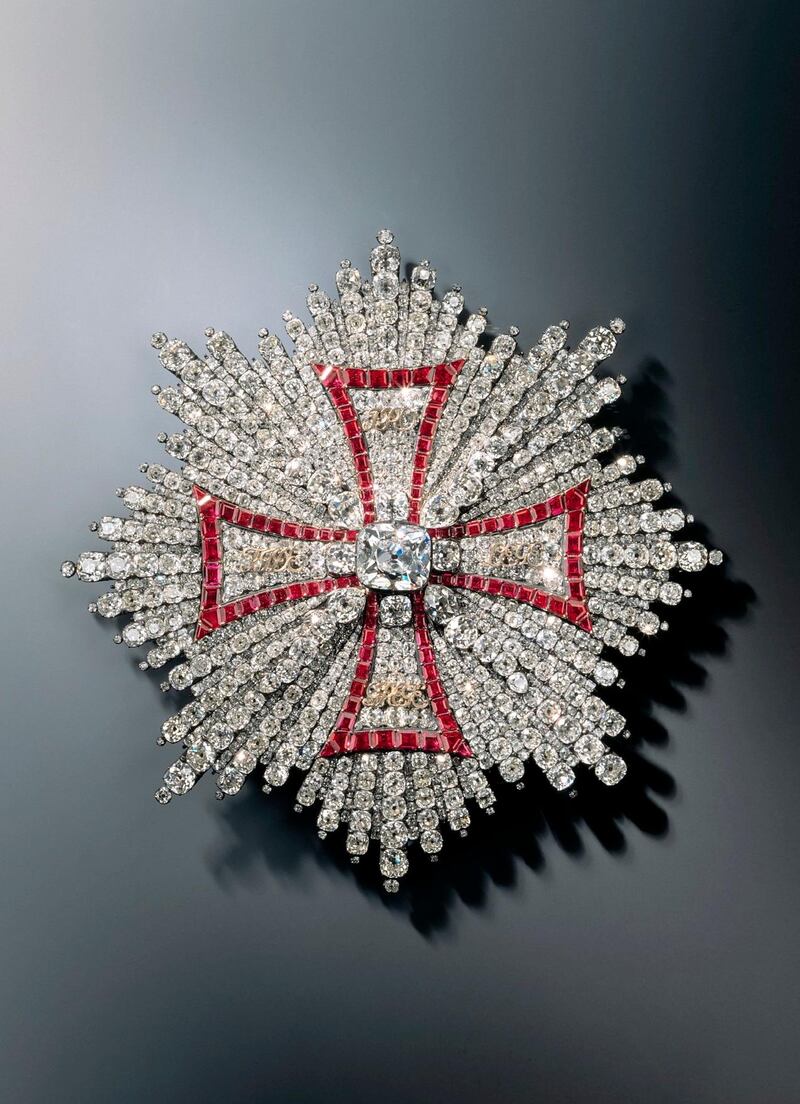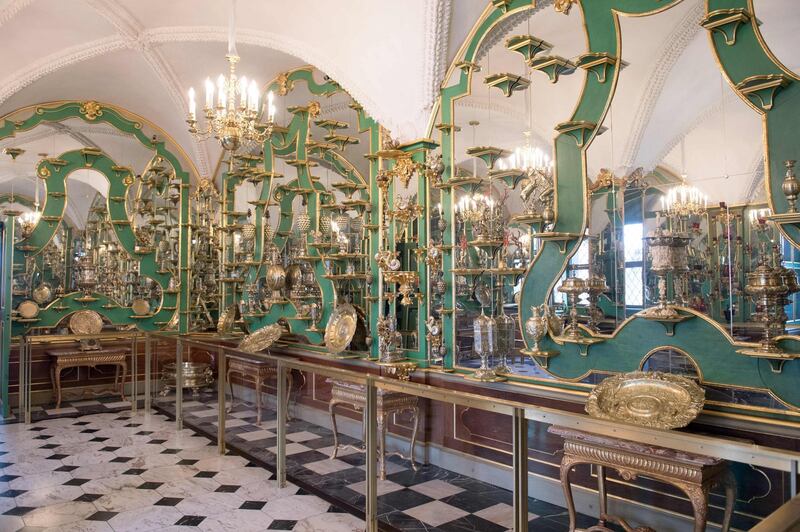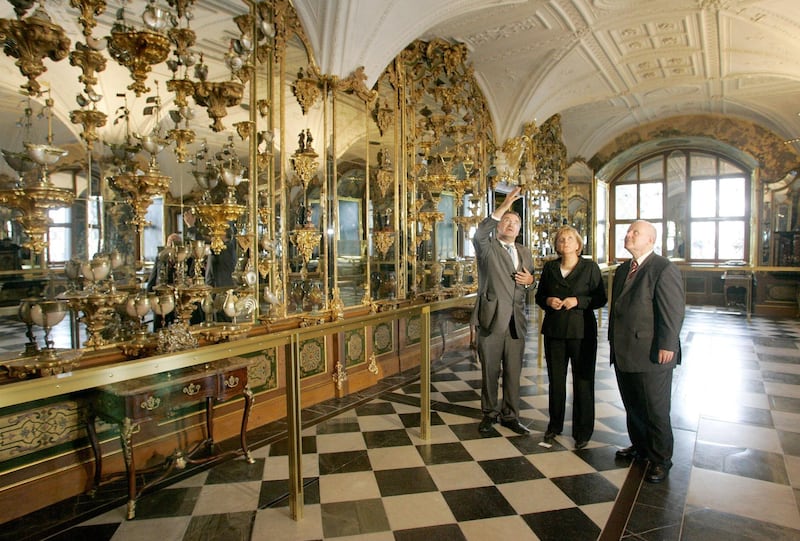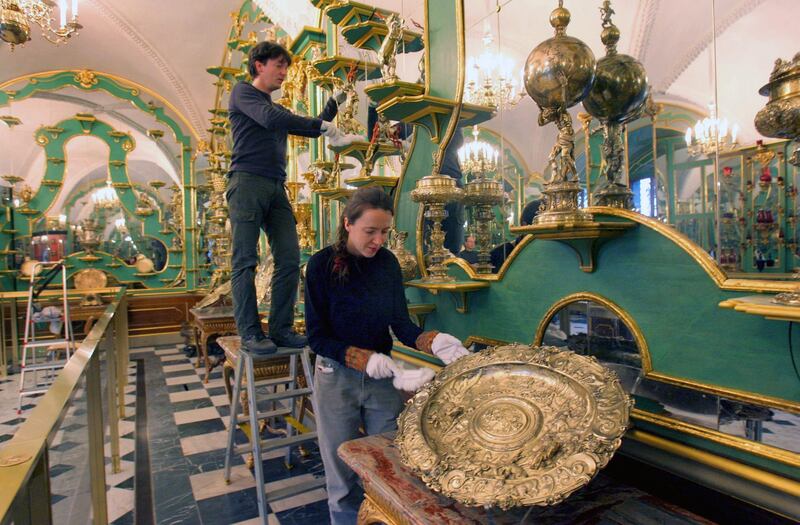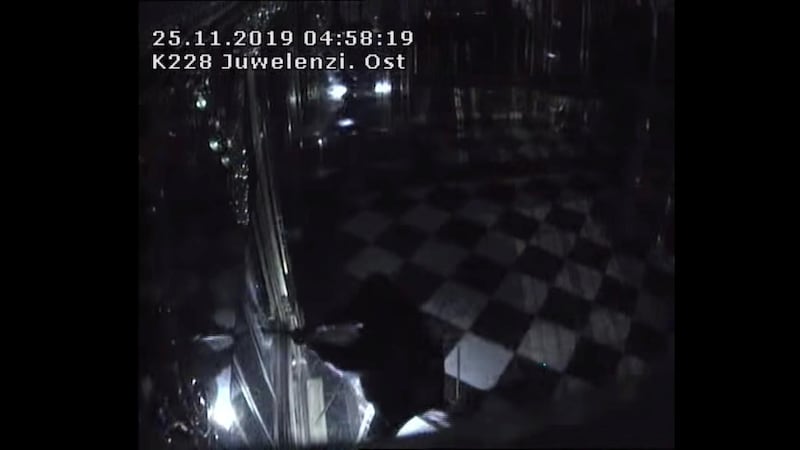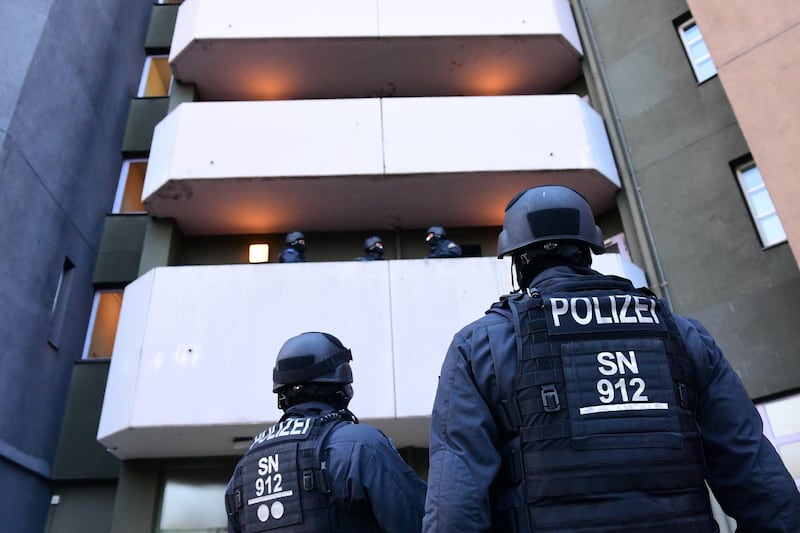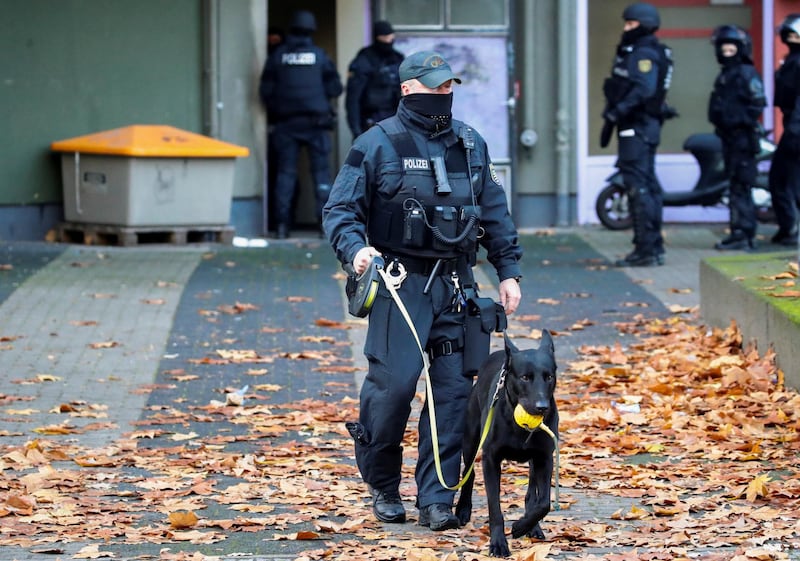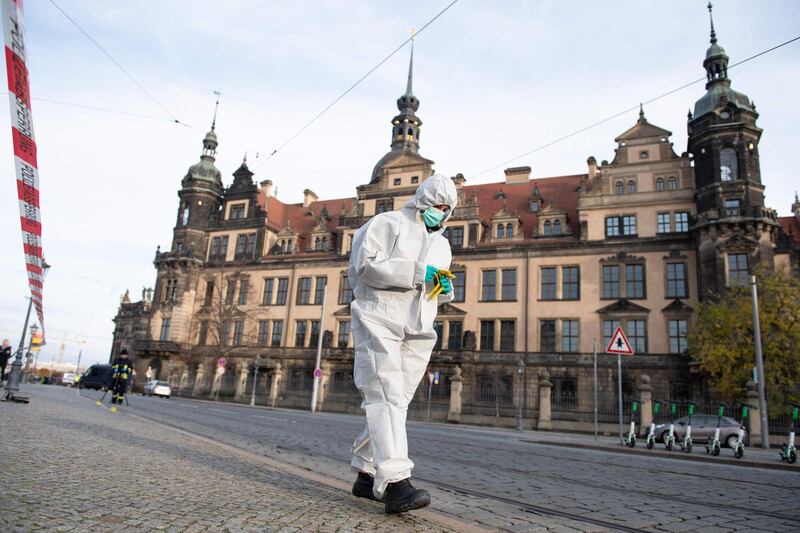A notorious Lebanese crime clan is accused of conducting an audacious heist of jewellery worth $1 billion from a museum in Germany.
Dresden prosecutors are concentrating their investigation on the powerful Europe-based Remmo family.
More than 1,600 officers, including armed commando units, carried out raids on Tuesday morning at 20 addresses in Berlin, focused on the Neukolln district which is known as a base for organised criminal gangs.
They arrested three people, German citizens who are all members of the sprawling family network, and are still hunting for two more.
Among the addresses targeted were 10 apartments belonging to the clan, plus garages, a caf, and store rooms.
The audacious robbery took place in November 2019 at Dresden’s Green Vault Museum, which houses one of Europe's greatest collections of treasures.
A large diamond brooch, a diamond epaulette and other treasures were taken.
It was described as the biggest art heist in modern history, with the stolen jewels estimated to be worth up to $1bn.
The Remmo family, which originates in Lebanon and south-east Turkey, arrived in West Germany in the 1980s during the Lebanese civil war.
Since then, family members have been convicted of a string of serious crimes, from fraud and extortion to money laundering and even murder.
Members of the same extended family were convicted this year for a similarly spectacular heist, the theft of a 100-kilogram Canadian gold coin known as the "Big Maple Leaf" from Berlin's Bode Museum in 2017.
The coin, with an estimated value of $4.45m, has not yet been recovered and authorities believe it was probably cut up into smaller pieces and sold.
Cousins Ahmed Remmo and Wissam Remmo, along with a friend who worked as a security guard at the museum, were all convicted of the crime and sentenced to several years in prison.

Members of the family had been under surveillance for some time before Tuesday’s operation was launched.
Wissam Remmo, who was not in custody while appealing against his sentence, was among those arrested on Tuesday.
The 23-year-old was the first to be detained when special forces stopped his car at 3am. Two other family members, aged 23 and 26, were also arrested on suspicion of organised robbery and arson and all three appeared before a judge later in the day.
A few hours after the raids, police released mugshots of two other family members, twin brothers Abdul Majed Remmo, 21, and Mohamed Remmo, who are still wanted.
Officers said the clan members had been tracked down using DNA from the crime scene.
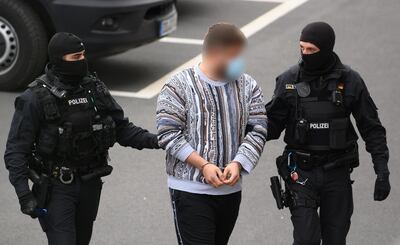
Berlin’s top security official, Andreas Geisel, said the raids should serve as a warning to organised crime families in general.
“Nobody should believe that he can set himself above the rules of the state,” Mr Geisel said.
The searches did not immediately turn up any of the missing treasures.
“We’d have to have a lot of luck in order to find them a year after the crime,” said Dresden police spokesman Thomas Geithner.
The Green Vault is one of the world’s oldest museums. It was established in 1723 and contains the treasury of Augustus the Strong of Saxony, comprising about 4,000 objects of gold, precious stones and other materials.
The collection was brought together in the 18th century by Augustus the Strong, Elector of Saxony and later the King of Poland, who commissioned ever more brilliant jewellery as part of his rivalry with France's King Louis XIV.
One of its best known treasures – the 41-carat Dresden Green Diamond – was away on loan at New York's Metropolitan Museum of Art at the time of the break-in.
The treasures of the Green Vault survived Allied bombing raids during the Second World War, only to be carted off as war booty by the Soviet Union. They were returned to Dresden, the historic capital of the state of Saxony, in 1958.
Having initiated a partial power cut and broken in through a window, the robbers snatched priceless 18th-century jewellery from the collection of August the Strong.
Items stolen included a sword whose hilt is encrusted with nine large and 770 smaller diamonds, and a shoulder piece that contains the famous 49-carat Dresden white diamond.
Dramatic CCTV footage released at the time showed one of the robbers breaking into a display case with an axe. Officers were on the scene five minutes after the alarm sounded, but the thieves escaped.
